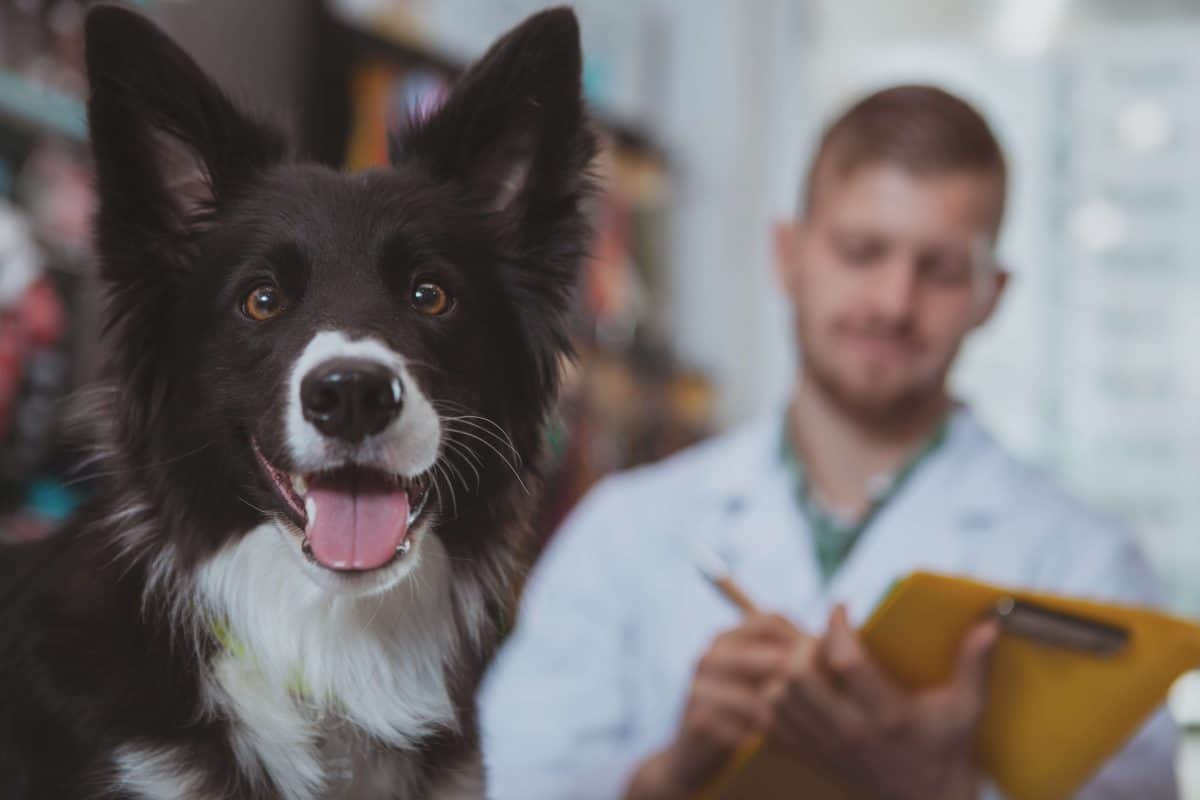The Power of Happy Visits

Is your dog afraid to go to the vet’s office or grooming salon? Do they resist going through the door? Does she pant, pace or drool? Does she suddenly start shedding while waiting in the lobby? You and your dog are not alone. And when one dog is fearful, they exude stress hormones which every other dog can smell. If your dog smells the stress of another dog, she may start to believe there’s a good reason to be scared in that space. But we can help your pup feel better about these stressy situations through what we call Happy Visits.
HAPPY VISITS
Happy Visits are short trips to these stress inducing locations with a focus on helping the dog learn that not only does nothing scary happen, but really good stuff happens. Start slow and make sure your pup feels safe at each step of the process before continuing to the next step. Short visits are best to start. Pair the scary place with high value, tasty treats (your dog will tell you what ‘high value’ is for her).
Case Study: My Dog Hagrid
When Hagrid was a puppy he had a bad vaccine experience and the needle poke resulted in a week of pain so great that he screamed every time he moved. This meant more trips to the vet for more needle pokes to try to help reduce his pain. Once he was healed from that, I knew I had to help make the vet’s office Disney Land again.
I started by just driving to the parking lot and sitting in the car. When he looked toward the vet’s office, I gave him a tasty treat and then waited for him to look at the vet’s office again so I could treat again. We did this until he was excited to pull into the parking lot. I started at the far side of the parking lot and moved a row closer as Hagrid showed he was comfortable, until we were parked directly in front of the vet’s office door.
Once he was excited about being in the car in that parking lot, I took him out of the car and we just walked back and forth past the office door (and about 3 doors down in each direction). Each time we got to the vet’s office door, I would give him a bite of his favorite treat. We did this in short sessions of just 2-5 minutes until he was excited to be at that door and actually starting to hesitate walking away from that door.
Next we started to open the door to the vet’s office – just a crack – and treat and walk away. We did this several times and then treated as we walked through the door. Now we’re in the lobby! We walked to the scale and weighed him, treating while he was on the scale, and then left. We did several visits where this was all we did.
Once he was comfortable with going in to be weighed, we increased the criteria. I would sit in the lobby with him and ask for a few easy skills such as Sit, Focus, and a couple of his favorite tricks. I invited the front desk staff to say ‘hello’ and offer/toss treats. I walked Hagrid around the empty lobby (on leash, of course) and, with permission, behind their desk to say ‘hello’ to the staff. Letting him explore and sniff helps make the space less scary.
NOTE: I initially arranged with the vet’s office to come by on their lunch break or last thing at the end of the day so the lobby would be empty. Once he was comfortable, I would come in at other times so that we could practice with other people/pets in the lobby.
Finally, and with permission, I would bring Hagrid into an exam room. We did tricks and skills in there. We practiced being on the exam table (with a towel for traction and temperature comfort). Treats were delivered for all activities in the exam room.
When he needed a real exam, I would bring him 2-4 times before the real visit and again 1-2 times after the real exam so the pokey-proddy event was just a moment in the middle of several visits.
This was 7 years ago. Once Hagrid was again comfortable there, I no longer needed to do ‘happy visits’ so much. Today, every vet’s office he goes into is an exciting place for him and he’s eager to greet the staff.
If your dog is afraid of the vet’s office or the grooming salon, you can do this type of work to help her get more comfortable at arriving and being in the space. Of course, there’s more work to be done for many dogs. You might need to condition them to tolerate brushing, bathing, nail trims, needle pokes, etc. But first we need your pup to be comfortable just being in the space. If you need help with this or any other part of your dog’s visits, please seek out the assistance of a force free/Fear Free ™ trainer.
Happy training!
Author - Jody Epstein
Jody Epstein is a certified behavior consultant, certified professional dog trainer, and holds a master’s degree in animal behavior from Tufts University. She has been training professionally for more than 12 years and is pleased to be part of the Academy of Pet Careers team, teaching the next generation of trainers. Look out for her blogs on all things dog training and animal behavior.

